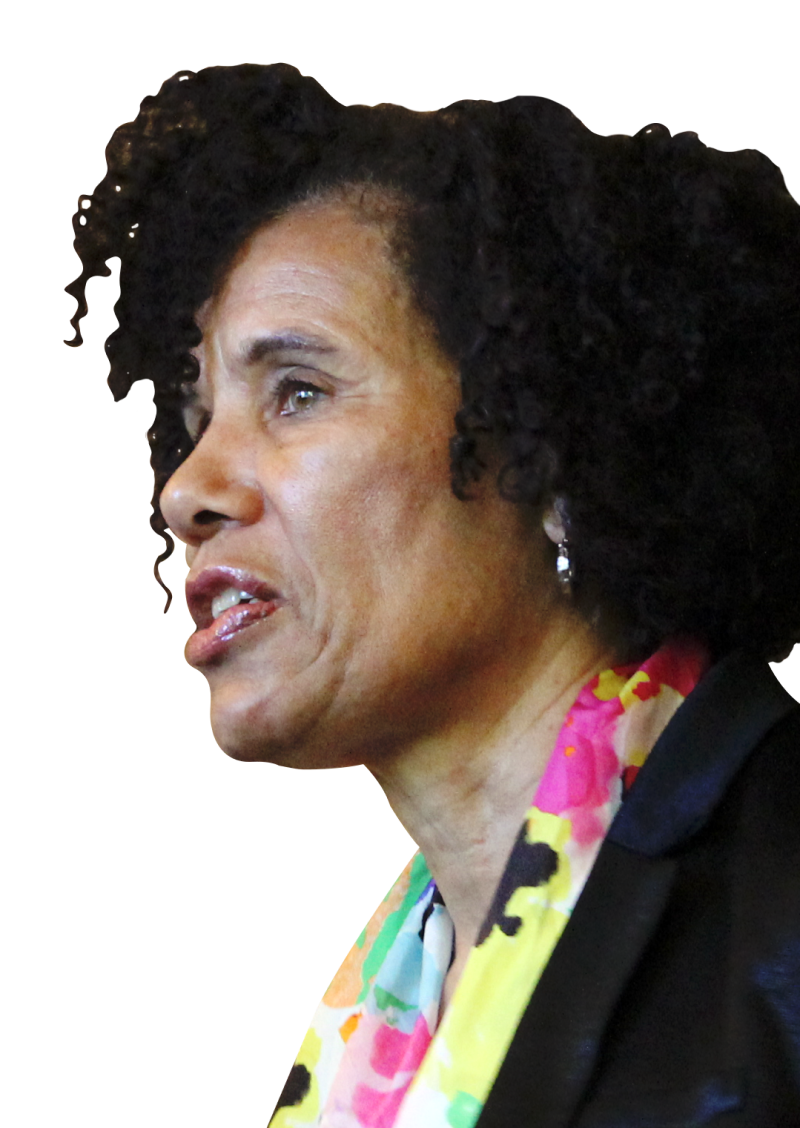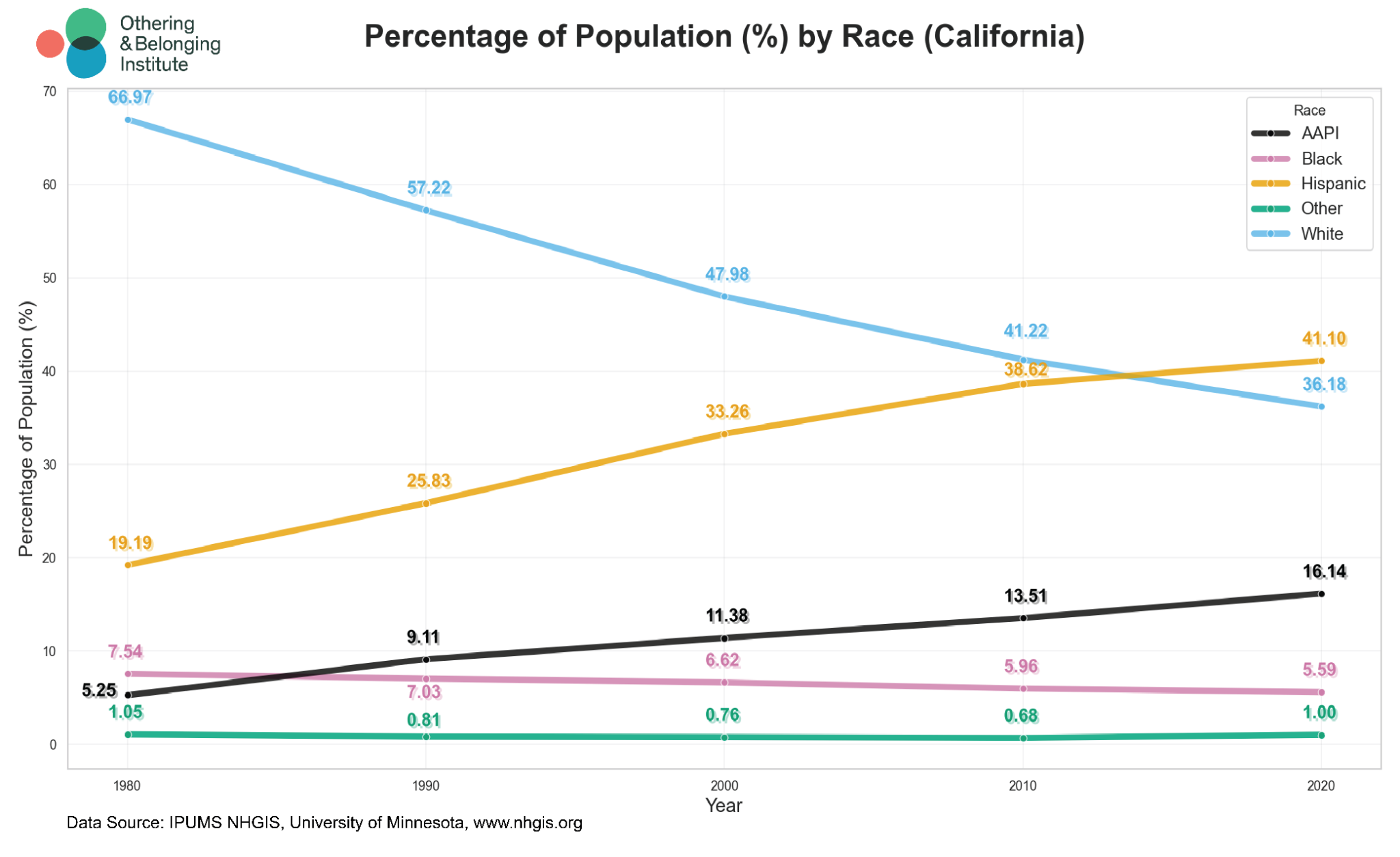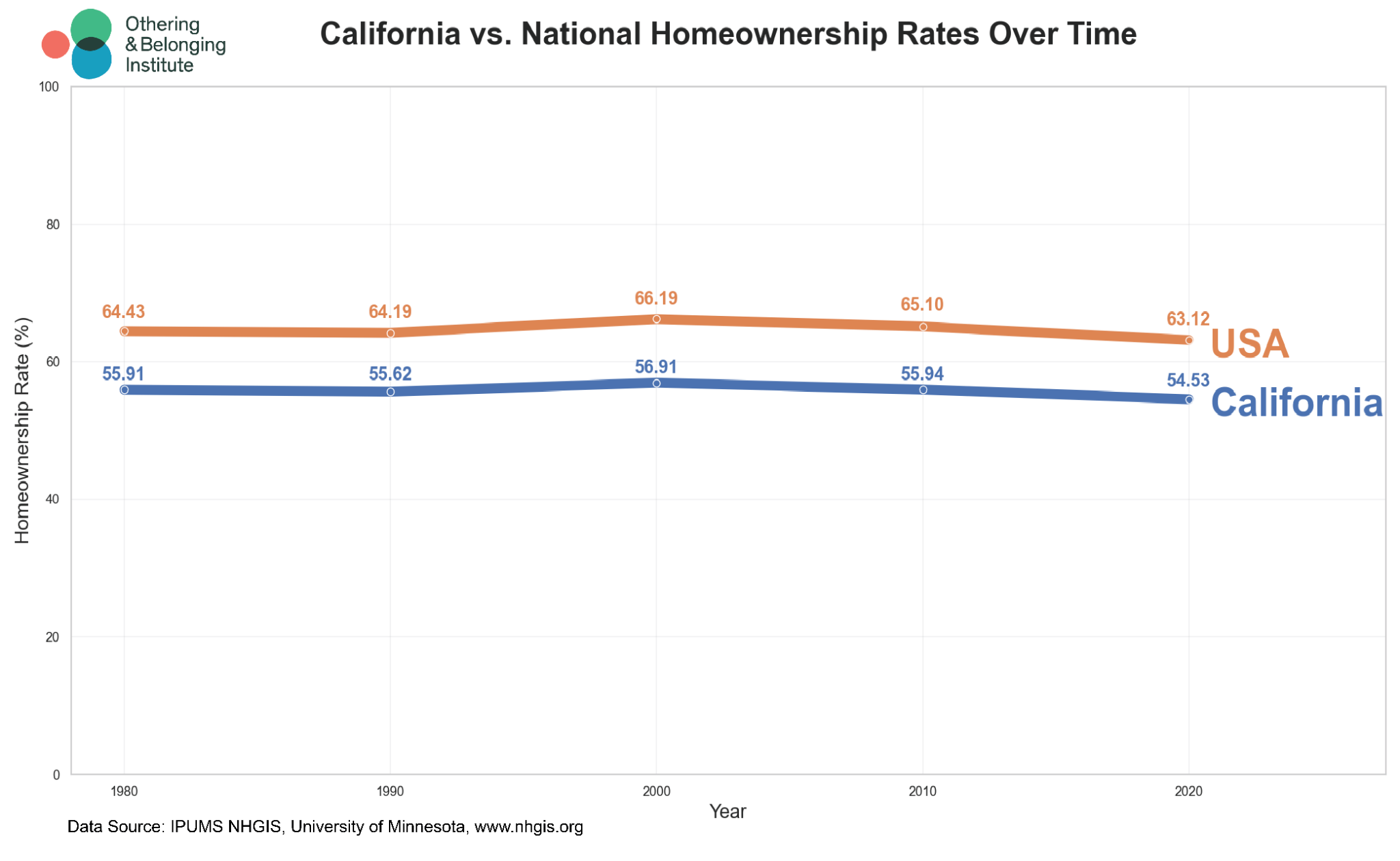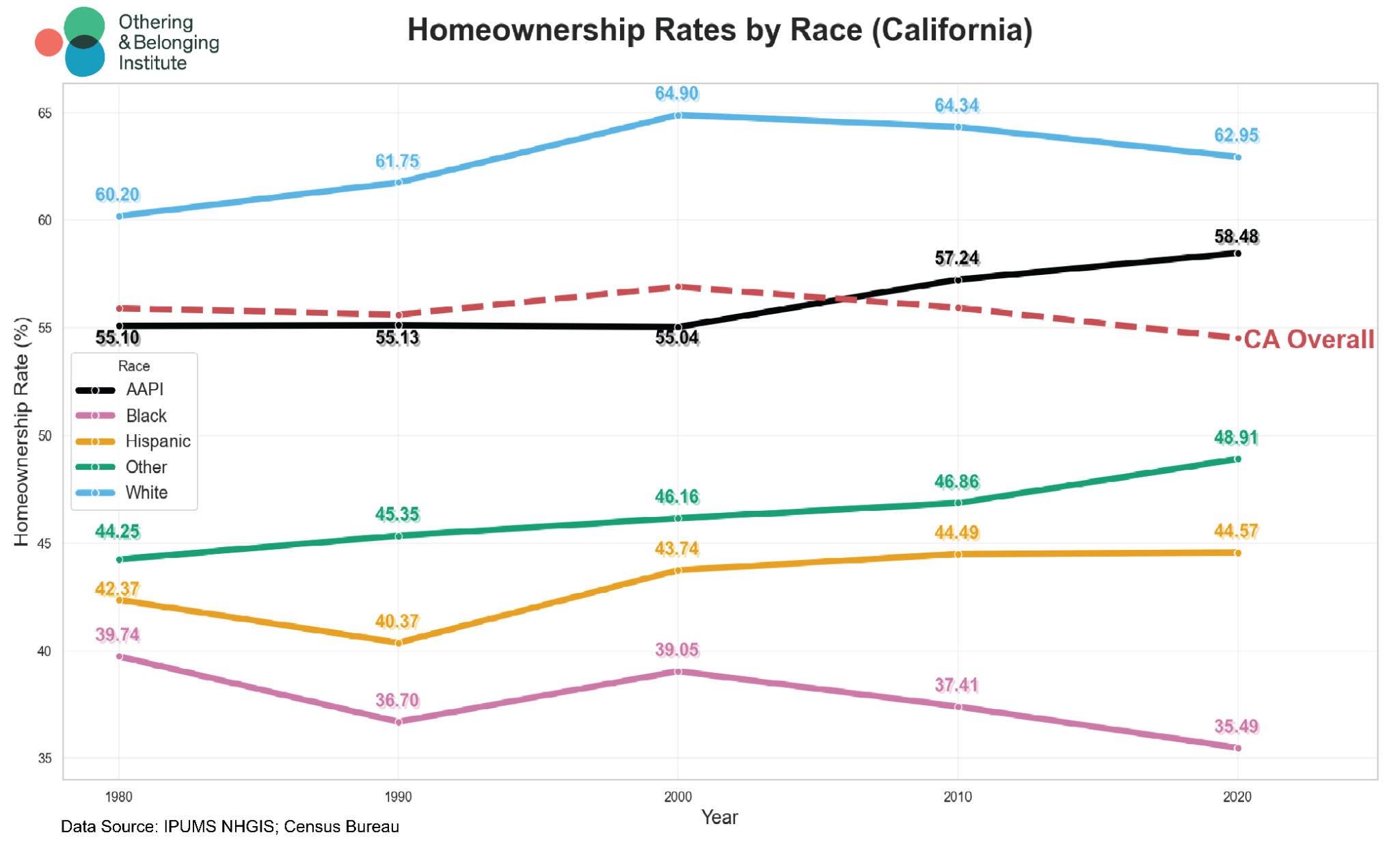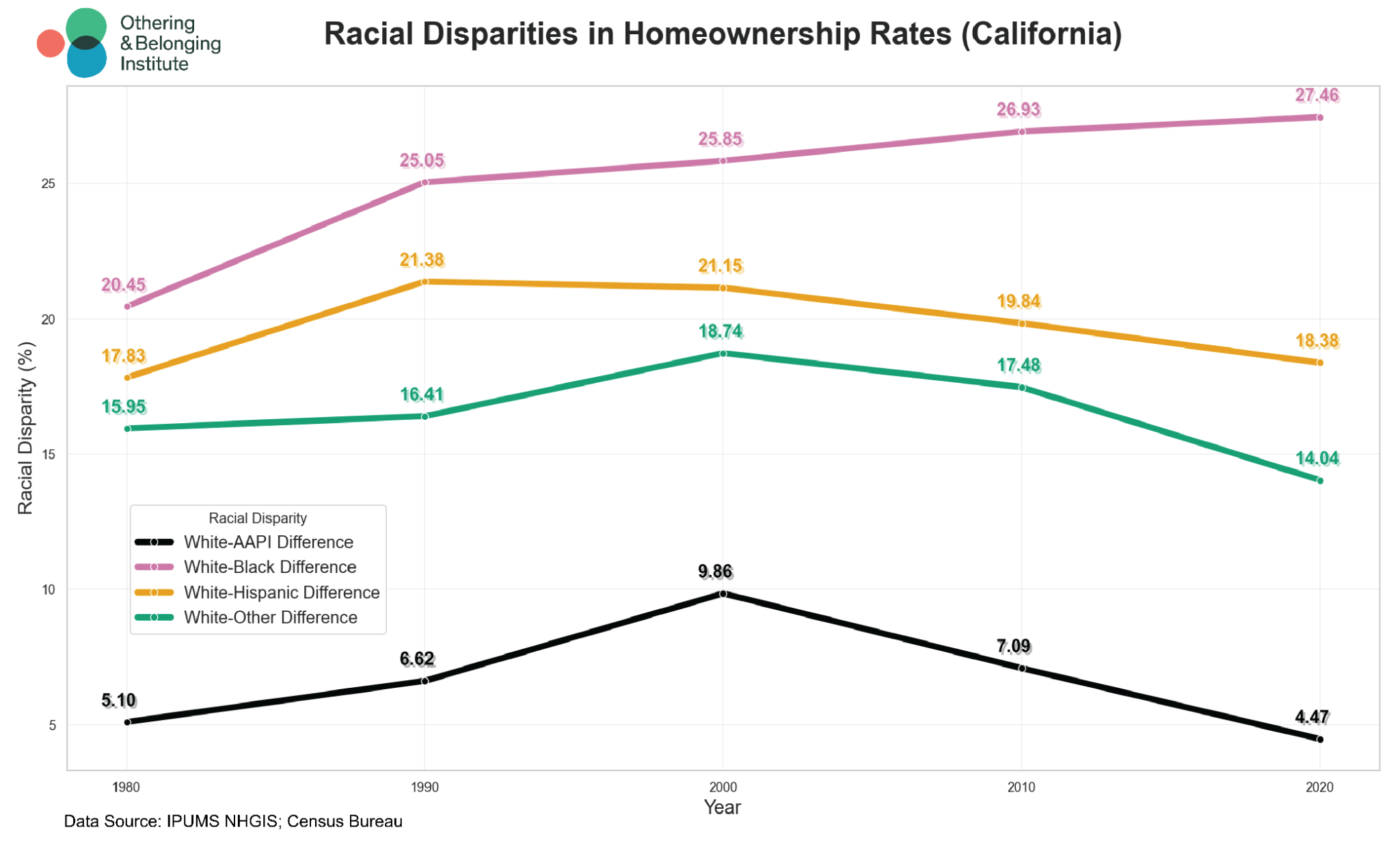Introduction1
Homeownership is a crucial pathway to financial stability and long-term wealth generation,2 offering individuals and families of all backgrounds the opportunity to build equity, invest in their futures, and strengthen their communities. However, not everyone has the same opportunities to become a homeowner. In this brief, we present our analysis of homeownership in California by race. We looked at changes in homeownership rates for five racial and ethnic groups: Hispanic, non-Hispanic White, non-Hispanic Black, non-Hispanic AAPI, and people of other races in California over the past five decades. We aim to help policymakers, community organizers and advocates understand the trajectory of California's homeownership rate—identifying those who have benefited and those who have been left behind3 —in order to seek solutions towards creating a more equitable housing landscape.
Demographic Change in California
Figure 1: Percentage of Population by Race (California)
Before reviewing the homeownership rate, we must first offer the context on how the racial makeup of California has changed, as shown in Figure 1. California was predominantly White in the 1980s. However, the Hispanic population has grown exponentially in the past five decades. In 2020, the relative Hispanic population share surpassed White (41.10 percent vs 36.18 percent), becoming the most populous racial group in California.
California is today much more diverse than it was in 1980. Besides the massive growth of the Hispanic population, the relative AAPI population share more than tripled, growing from 5 percent to 16 percent from 1980 to 2020. The relative White population share plummeted from 67 percent to 36 percent, showing a continuously decreasing pattern. Contrary to other racial groups of color, the relative Black population share had a slight decrease from 1980 to 2020 (8 percent to 6 percent).
Homeownership Rates by Race
Figure 2: California vs. National Homeownership Rates Over Time
Between 1980 and 2020, California's homeownership rates mirrored the overall trend in the United States but consistently lagged behind (Figure 2). Throughout this period, California's homeownership rate remained persistently lower than the national level.
Figure 3: Homeownership Rates by Race in California (CA Overall Trend Included)
Over the past five decades, White households in California have consistently achieved significantly higher homeownership rates compared to the state level (compared to the dashed line in Figure 3), indicating a clear advantage in attaining homeownership. For AAPI households, homeownership rates were slightly below the overall level prior to 2010 but have shown a steady upward trend, surpassing the statewide rate since 2010. In contrast, other minority groups, particularly Black households, have faced significantly lower homeownership rates compared to the state level, highlighting persistent disparities.
All racial groups saw homeownership rates increase, except for Black households, compared to five decades ago, as shown in Figure 3. Hispanic, AAPI and “Other” households achieved historic peaks of homeownership rates in 2020. Not only relatively fewer Black people resided in California in 2020, but also the percentage of those who own a house dropped from 40 percent to 35 percent, while the rate of people of “Other” households rose by more than 4 percentage points, the largest growth among all racial groups. Black is the only racial group which had a drop in its homeownership rate.
Both the homeownership rate of White households (60 percent - 63 percent) and the rate of Hispanic households (42 percent - 45 percent) had a slight increase from 1980 to 2020. The homeownership rate of AAPI households rose from 55 percent in 2000 to 58 percent in 2020 and appears to be maintaining this upward momentum.
Racial Disparities in California’s Homeownership Rates
Figure 4: Racial Disparities in Homeownership Rates (California)
The drop in the homeownership rate of Black households results in what housing advocates and economists call a “racial homeownership gap” between the share of White households that own homes and the share of Black households that own homes.4 According to the latest decennial census, that gap was around 27 percent in 2020, compared to 20 percent in 1980, as seen in Figure 4. The gap between White and Black homeownership rates has continued to widen over the years, while AAPI and "Other" households have made progress in closing the gap (from 5 percent to 4.5 percent for AAPI and 16 percent to 14 percent for Other) with White households from 1980 to 2020. The gap between White and Hispanic homeownership rates has widened slightly since 1980, increasing by almost 0.6 percentage points.
Conclusion
All racial groups, except Black households, saw homeownership rates grow over the last five decades. However, the racial homeownership gap between Black and White households is still concerning as it is getting larger. The gap between White and Hispanic homeownership rates also shows a slight increase. Despite some advances in homeownership for communities of color, disparities persist among racial and ethnic groups, especially for Black and Hispanic communities. Our analysis does not analyze the reasons behind these disparities, but we believe some historical and structural factors played a role in these disparities, including economic inequality, challenges for racial minority groups to secure mortgages, and historical discriminatory practices like redling and exclusionary zoning policies.5 We hope this research inspires reflection on the racial homeownership gap in California and encourages consideration of policies that promote fair lending, affordable housing, and counseling prospective homebuyers of available financial options.
- 1The author gratefully acknowledges Shreshta Bhat for collecting the data and generating some of the graphs. Special thanks are also extended to Samir Gambhir and Stephen Menendian for their invaluable comments and insights.
- 2Marisol Cuellar Mejia, Hans Johnson, and Julien Lafortune. 2024. “California’s Housing Divide.” https://www.ppic.org/blog/californias-housing-divide/.
- 3Laurie Goodman and Jun Zhu. 2021. “The Future of Headship and Homeownership.” https://www.urban.org/research/publication/future-headship-and-homeownership.
- 4Anna Bahney. 2023. “The gulf between Black homeowners and White is actually getting bigger, not smaller.” https://www.cnn.com/2023/03/02/homes/race-and-home-buying-nar/index.html.
- 5Lawrence Yun, Jessica Lautz, Brandi Snowden, and Meredith Dunn. 2024. “2024 Snapshot of Race and Home Buying in America.” https://www.nar.realtor/newsroom/racial-minority-groups-increased-their-homeownership-rates-while-still-facing-significant-homebuying-challenges.
